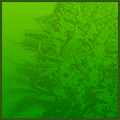|
We Update Daily!
 Custom Search Custom Search
Chris S. Kenoyer. Owner
MMJ Patient, Medical Activist,
Online Patients Advocate,
Online MMJ News Journalist
My Medical Bio
Follow Us Now On Twitter
@MedicalMMJMan
Or Follow Us Now
On Facebook
Email Us Here
olpwebs@yahoo.com
Or Email Us Securely Here
MedicalMMJMan@countermail.com
NEW 100% Encrypted Email Server
OLP’s Free MMJ News EList
Get The Latest In MMJ News
Press Contact Info
Is CBD? A Possible Cure For
Breast Cancer..? And All The Other
Many Forms & Types Of Cancer..?
Learn More About CBD Here
***************************
Advertise Here On OnlinePot
Rates As Low As $50 a Year
24/7 – 365 Days A Year Of Sales!
***********************************
Website Navigational Links
Main Start Page 2
**************************
Latest Marijuana News Reports
*********************************
Parody’s Cartoons US
Government Grown Pot,
Term Papers, School
Reports, & Thesis’s On
Marijuana & Cannabis
*********************************
Amsterdam A to Z
********************************
Canadian Marijuana Websites
*******************************
Church’s & Pot Cannabis
*****************************
Co-Ops, Clinics, Dispensary’s
*****************************
Marijuana Doctors & Clinics
****************************
Pot Cooking Recipes
****************************
Drug Testing A To Z
***************************
Pot Games
****************************
Pot Songs Video’s
****************************
100’s Of Grow Guides
***************************
Hash A- Z
***************************
Cannabis Legal Info, Drug
Lawyers, State, Federal Laws,
State & Supreme Court Rulings
**********************
POW’s Of The MMJ War!
*****************************
Other Marijuana Websites
Reciprocal Link Exchange
****************************
Medical Marijuana Studies,
Research Report’s, Medical
Cannabis Clinic Study’s
****************************
Parody’s & Cartoons
When We All Need A Good Laugh!
****************************
Avoiding Online MOM Scammers
Newly Re-Updated Info!
*****************************
The Politics Of Contraband
Medical Marijuana In The Mail?
******************************
The Hall Of Shame Section
The Online MOM Scammers
*****************************
Online MOM Providers Ads
****************************
Politicians & Voters Rights
****************************
Medical Marijuana, Strains
****************************
The OG Marijuana Strain Guide
****************************
800+ FAQ Growing Questions
****************************
Patients Spiritual Guidance,
Free Online Crisis Help Center
****************************
Online Marijuana Seed Banks
****************************
Maximum Security Section
Just Updated!
*****************************
Traveling Tips, Guides, B & B’s
****************************
Vaporizers A To Z
*****************************
Online Pot Video’s & Movies
**********************************************
Please Visit Both Of Our Sister Websites!
Maine Patients Coalition.org
The Reefer Madness Teaching Museum.org
Listen Right Here Online!
To Original 1930-1950’s
Reefer Madness Propaganda
Radio Shows And Programs
Before TV There Were
"Radio Stars"



*********************************
Legal Disclaimer
Guest Book
Translate Text or Web Page Go To:
Language Tools Google Translations
Article Submissions & News
Reports Are Always Gladly
Accepted Here.

No part of this site maybe used or
reproduced in whole or in part
without the written consent of the
Copyright Owner
www.onlinepot.org
OLP ENTERPRISES L3C
1999-2014 Copyright
? All rights reserved
OnlinePot assumes no legal liability for any products, or information or
news posted, services offered, Or
any contests or give away’s offered.
|
|
DEA Scientific Study Of Several
Cannabis Marijuana Studies Of THC
{1997, above), a one gram cigarette containing 1% THC containing cannabis, would contain 10 mg of THC -a dose well capable of producing a social high.
Return Back To Main Medical Reports Page
Carlini et al. (1974) examined 33 subjects who smoked marijuana cigarettes with different ratios of constituent cannabinoids. The plant containing 0.82% THC produced larger than expected results based on the estimates from the THC content. Smoking a 250 mg cigarette containing 5.0 mg of ?9-THC induced more reactions graded 3 and 4 than 10 or 20 mg of?9-THC . It was further observed that the psychological effects (subjective "high/1) started around 10 min after the end of the inhalation, and reached a maximum 20 to 30 min later, subsiding within 1 to 3 hrs. The peak of psychological disturbances, therefore, did not coincide in time with the peak of pulse rate effects. Carlini et al., suggested that other constituents of the marijuana were interacting synergistically with the THC to potentiate the subjective response induced by the smoking of the cigarette. Karniol and colleagues (1973,1974) have clearly demonstrated that cannabidiol (CBD)blocks some of the effects induced by THC, such as increased pulse rates and disturbed time perception. More importantly, CBD blocked some of the psychological effects of THC, but not by altering the quantitative or intensity of the psychological reactions. CBD seemed better able to block the aversive effects of THC. CBD changed the symptoms reported by the subjects in such away that the anxiety component produced by THC administration was actually reduced. The animal subjects of one study showed greater analgesia scores with a CBD+THC combination (1973) and the human subjects from the other study (1974) showed less anxiety and panic but reported more pleasurable effects. CBD may be best seen as an "entourage" compound (Mechoulam, Pride, DiMarzo, 1998) which is administered along with THC and results in a functional potentiation of THC’s behavioral and subjective effects. This potentiation can be in both the intensity and/or duration of the high induced by marijuana. According to Paris & Nahas (1984) the CBD:THC ratio in industrial or fiber type hemp is 2:1. Relevant to the current petition, the CBD:THC ratio producing the greatest increase in euphoria in the Karniol et al. studies was 2:1 (60:30 mg) .
Jones & Pertwee(1972) were first to report that the presence of cannabidiol inhibited the metabolism of THC and its active metabolite. These data were soon replicated by Nilsson et al., (1973) .Bronheim et al., (1995) examined the effects of CBD on the pharmacokinetic profile of THC content in both blood and
12
brains of mice. CBD pretreatments produced a modest elevation in THC-blood levels; area under the kinetics curve of THC was increased by 50% as a function of decreased clearance. CBD pretreatments also modestly increased the Cmax, AUC, and half-life of the major THC metabolites in the blood. The THC kinetics function showed a 7 to 15-fold increase in the area under the curve, a 2 to 4-fold increase in the half-life, as well as the tmax. CBD pretreatments resulted in large increases in area under the curves and half-lives of all the THC metabolites in the mice brains. The inhibition of the metabolism of THC and its psychoactive metabolites by CBD may underlie the potentiation in the subjective effects of THC by CBD in humans.
In addition to THC, hemp material contains a variety of other substances (e.g., Hollister, 1974), including other cannabinoids such as cannabidiol (CBD) and cannabinol (CBN) .One comprehensive review described the activities of 300 capnabinoid compound in preclinical models (Razdan, 1986) .Since CBD is always present in preparations of cannabis, it may represent a high CBD:THC ratio in the case of low THC cannabis. Therefore, it is important to understand the interactions of cannabidiol and ?9-THC.
Structure-activity studies of cannabinoid compounds characterized cannabidiol in relationship to ?9-THC and other cannabinoids (Martin et al., 1981; Little et al., 1988). These and other studies have found that cannabidiol was inactive and did not produce neuropharmacological effects or discriminative stimulus, subjective effects and behavioral effects predictive of psychoactive subjective effects (Howlett, 1987; Howlett et al., 1992; c.f., Hiltunen and Jarbe,. 1986; Perez-Reyes et al., 1973; Zuardi et al., 1982; Karniol et al., 1974).
Other studies have reported that cannabidiol has cannabinoid properties, including anticonvulsant effects in animal and human models (Consroe et al., 1981; Carlini & Cunha, 1981; Doyle and Spence, 1995) , hypnotic effects (Monti, 1977) , anxiolytic effects (Musty, 1984; Onaivi, Geen,& Martin, 1990; Guimarares et al., 1990; 1994) and rate-decreasing effects on operant behavior (Hiltunen et al., 1988) .
Experiments with cannabidiol in combination with THC have found that certain behavioral responses induced by THC (i.e., operant, schedule-controlled responding) were attenuated by cannabidiol (Borgen and Davis, 1974; Brady and Balster, 1980;
13
Consroe et al., 1977; Dalton et al., 1976; Kraniol and Carlini, 1973; Karniol et al., 1974; Welburn et 1976; Zuardi and Karniol, 1983; Zuardi et al., 1981, 1982; Hiltunen et al., ~988) .However, other affects produced by THC are augmented or prolonged by the combined administration of CBD and THC or marijuana extract (Chesher and Jackson, 1974; Hine et al., 1975a,b; Fernandes et al., 1974; Karniol and Carlini, 1973; Musty and Sands, 1978; Zuardi and Karniol, 1983; Zuardi et al., 1984) .Still other studies did not report any behavioral interaction between the CBD and THC (Bird et al., 1980; Browne and Weissman, 1981; Hollister and Gillespie, 1975; JArbe and Henricksson, 1974; Jarbe et al., 1977; Mechoulam et al., 1970; Sanders et al., 1979; Ten Ham and DeLong, 1975).
A study to characterize the interaction between CBD and THC was conducted using preclinical drug discrimination procedures. Rats and pigeons trained to discriminate the presence or absence of THC, and tested with CBD administered alone and in combinations with THC (Hiltunen and JArbe, 1986) .
Specifically, in rats trained to discriminate 3.0 mg/kg, i.p. THC, CBD (30.0 mg/kg) was administered alone and in combination with THC (0.3 and 1.0 mg/kg, i.p.) .In pigeons trained to discriminate 0.56 mg/kg, i.m. THC, CBD (17.5 mg/kg) was administered alone and in combination with THC (0.1, 0.3, and 0.56 mg/kg, i.m.) .CBD prolonged the discriminative stimulus effects of THC in rats, but did not change the time-effect curve for THC in pigeons. In pigeons, the administration of CBD did not produce any differential effect under a fixed ratio schedule of reinforcement (Hiltunen and JArbe, 1986) .
These data suggest that CBD may somehow augment or prolong the actions of THC in rats and had no effect in pigeons. In the present study, the CBD/THC ratios ranged from 30:1 to 100:1 in rats and enhanced the stimulus effects of THC. However, similar CBD/THC ratios in pigeons (31:1, 58:1 and 175:1) did not result in any changes to THC’s discriminative stimulus or response rate effects (Hiltunen and Jarbe, 1986) .
It should be noted that cannabidiol can be easily converted to delta-9 and delta-8-tetrahydrocannabinol. Even industrial hemp plant material (leaves) , containing high concentrations of CBD, can be treated in clandestine laboratories to Convert the CBD to delta-9-tetrahydrocannabinol (Mechoulam, 1973) converting a supposedly innocuous weed into a potent smoke product.
14
In conclusion, the "entourage" compound, cannabidiol, does contribute to all of the effects ascribed to THC, however it also appears to lack cannabimimetic properties. However, there is no credible scientific evidence that CBD is a pharmacological antagonist at the cannabinoid receptor (Howlett, Evans, & Houston, 1992) .There is clear evidence that CBD can functionally antagonize some of the aversive effects of THC (Dewey, 1986) .The data from the scientific literature cited above, clearly demonstrate the ability of CBD to modify some very specific effects of THC. Most importantly, relative to the euphorigenic effects of THC (which contributes to its abuse liability), CBD appears to potentiate the psychological or subjective effects of THC by potentiating the blood and brain THC and 11-0H-THC levels and by functionally blocking the aversive (anxiety-like) properties of THC.
Abuse Liability Summary:
Preclinical and clinical experimental data demonstrate that marijuana and ?9-THC have similar abuse liabilities (i.e., drug discrimination, self-administration, subjective effects) .Both preclinical and clinical studies show that discontinuation of either marijuana or ?9-THC administration produces a mild withdrawal syndrome. The effects of THC are dose-dependent and several studies have found that low-potency THC is behaviorally active and can produce cannabimimetic-like subjective and
physiological effects.
ACTUAL ABUSE
There are dozens of data collection and reporting systems that are useful for monitoring the United States’ "problem with abuse of licit and illicit substances. These data collection and reporting systems provide quantitative data on many factors related to abuse of a particular substance, including incidence, pattern, consequence and profile of the abuser of specific substances (cf., Larsen et al., 1995) .
Evidence of actual abuse is defined by episodes/mentions in the databases indicative of abuse/dependence. Some of the databases that are utilized by DEA to provide data relevant to actual abuse of a substance include the Drug Abuse Warning Network (DAWN), National Household Survey on Drug Abuse, Monitoring the Future survey, FDA’s Spontaneous Adverse Events
15
Reports, the American Association of Poison Control Centers database and reports of the Community Epidemiology Work Group (CEWG).
.
Drug trafficking and diversion data provide strong evidence that a drug or other substance is being abused. In order to determine the pattern, incidence, and consequences of abuse and the demographics of abusers of a particular substance to be controlled, DEA relies on data collected from a number of sources, including the United States government as well as state and local law enforcement groups. Information from these sources often provides a first indication of an emerging pattern of abuse of a particular drug or substance, and when taken together with other data sources provide strong evidence that can be used in determining a substance’s placement in the schedules listed in the CSA.
The evidence from epidemiological studies conclude that marijuana use alone and in combination with other illicit drugs is increasing. The most recent "Monitoring the Future Study", documented increases in lifetime, annual and current (within the past 30 days) and daily use of marijuana by eighth and tenth graders; this increasing trend began in the early 19901s.
Similarly, according the NIDA’s "National Household Survey", marijuana use is increasing with the greatest increase among the younger age groups (12-17 years of age) .The frequency of marijuana use in the past year increases significantly among 1217 year olds. This survey also found that youths who used marijuana at least once in their lives were more likely to engage in violent or other antisocial behaviors.
Marijuana is the most readily available illicit drug in the United States. Cannabis is cultivated in remote locations and frequently on public lands. Major domestic outdoor cannabis cultivation areas are found in California, Hawaii, Kentucky, New York and Tennessee. Significant quantities of marijuana were seized from indoor cultivation operations; there were 3,532 seizures in 1996 compared to 3,348 seized in 1995. Mexico is the major source of foreign marijuana, along with lesser amounts from Colombia and Jamaica (NNICC, 1996) .
Domestically, marijuana is distributed by groups or individuals, ranging from large sophisticated organizations with
16
controlled cultivation and interstate trafficking, to small independent traffickers at the local level.
(2)
SCIENTIFIC EVIDENCE OF ITS PHARMACOLOGICAL EFFECTS, IF KNOWN
Cannabis sativa is unique in that it is the only botanical source of the terpenophenolic substances referred to as cannabinoids which are responsible for the psychoactive effects of Cannabis. There are roughly 60 different cannabinoids found in Cannabis (Nahas, 1984; Murphy & Bartke, 1992; Agurell, Dewey & Willette, 1984) but the psychoactive properties of Cannabis are attributed to one or two of the major cannabinoid substances, namely delta-9-tetrahydrocannabinol and delta-8tetrahydrocannabinol. In fresh, carefully dried marijuana, up to 95% of their cannabinoids are present as (-)-delta-9-(trans)tetrahydrocannabinol carboxylic acid (Nahas, 1984; Murphy & Bartke, 1992; Agurell, Dewey & Willette, 1984) .The acid form is not psychoactive, but is readily decarboxylated upon heating to yield delta-9-tetrahydrocannabinol (neutral form) . Therefore, plant material could be very high in its "pro-drug" acid form and very low in neutral form but still be very potent when smoked.
There are two primary factors that influence THC content: genetic predisposition and environmental influences. Genetic factors are considered predominant in determining cannabinoid content, although, fluctuations in weather conditions have greatly enhanced or diminished the THC content.
Paris & Nahas (1984) have admonished that marijuana is not a single uniform plant like many of those encountered in nature, but a rather deceptive weed with several hundred variants. The intoxicating substances prepared from Cannabis vary considerably in potency according to the varying mixtures of different parts of the plant, and according to the techniques of fabrication. According to Paris & Nahas, this basic botanical fact has been overlooked by physicians and educators, who have written about marijuana as a simple, single substance, which uniformly yields a low concentration of a single intoxicant. In addition to changes due to its own genetic plasticity, marijuana has been modified throughout the ages by environmental factors and human manipulations, and is not yet a stabilized botanical species (Paris & Nahas, 1984) .
17
According to Paris & Nahas (1984) the terminology used by Fetterman et al. (1970, 1971) is somewhat misleading, especially with respect to their contention that environmental factors, including climate, are not as important as heredity in determining the cannabinoid content of cutigens. The analyses of Fetterman et al., (1970) were performed according to the technique by Doorenbos et al., (1971) on plant materials from variants that had been cut at the stem beneath the lowest leaves and air-dried. Seeds, bracts, flowers, leaves and small stems
were then stripped from the plant. Most of the small stems were removed by a 10-mesh screen, and the seeds were eliminated with a mechanical seed separator. This preparation of marijuana contains less seed and stem than most of the illicit material available in the United States. Cannabinoids were then extracted from the plant material and analyzed by standard techniques.
Other systems of separating Cannabis into drug, intermediate and non-drug typ~ have been developed. These are typically determined by chemical analyses based upon the method described by Doorenbos (1971) which utilizes manicured portions of the Cannabis plant only in determining percent concentration.
Cannabis sativa has been referred to as a widely distributed and unstabilized species. Cannabis exhibits extreme polymorphism (ability to alter, change) in different varieties, dependent upon many factors. For example, there are at least twenty strains which are cultivated for fiber. There have been many attempts to classify Cannabis as a function of intoxicant properties or fiber properties. Such classification efforts are dependent upon the age of the sample. And there is no totally reliable classification system based on a single chemical analysis. The plasticity of the genus has prevented the development of such a system (Turner et al. 1980a,b) .
In a study where twelve strains of Cannabis were grown out of doors in Southern England (Fairbairn and Liebmann, 1974, Fairbairn et al., 1971) , the following were determined:
1. Warm climate are not necessary for high THC content.
2. There is considerable THC content variation within and between plants.
3. Quantitative results of tetrahydrocannabinol
concentration (THC) are highly dependent upon the specific plant part sampled, the stage of
l8
growth and the size of sample.
4. Certain strains of Cannabis can be THC or cannabidiol (CBD) rich which does not seem to be dependent upon environmental conditions.
5. However, growing the same strain of Cannabis under different lighting conditions can produce plants that range from 2.4 to 4.42%THC concentration (based upon an analysis of the upper leaves) .And finally,
6. THC concentration are dramatically higher on dried flowering or vegetative tops of the plants relative to middle or lower portions.
In a similar study on the characterization of Cannabis accessions with regard to cannabinoid content, vis-a-vis other plant characters (deMeijer, 1992), it was determined that:
1. there exists considerable variation within and among accessions for cannabinoid content;
2. mean cannabinoid content is strongly affected by year of cultivation;
3. there is no strict relationship between chemical and non-chemical traits; and,
4. it is uncommon, but some accessions combine high bark fiber content and considerable psychoactive
potency.
In 1993 de Meijer reported the results of a government (Netherlands) funded industrial hemp project designed to investigate the stem quality, yield, and a comparative analysis to wood fibers. deMeijer found that the commercial grade industrial hemp seeds, germplasms derived from <0.3% THC chemovars, demonstrated a significant variation in the average THC content which ranged from 0.06 to 1.77% in the female dry leaf matter. deMeijer concluded by stating,
Although high bark fiber content does not necessarily exclude high THC content, most fiber cultivars have very low THC content and thus possess no psychoactive
potency
While the data from his own study refutes these conclusions he does conclude that the industrial hemp plant does not preclude high THC content.
–
19
A review of these and other studies in the scientific literature, indicate that THC concentrations vary within portions of the Cannabis plant (Hanus et al., 1989, 1975) .In some studies, the concentration of THC can increase as much as 100% from leafy to flowering portions of the same plant. THC concentrations are known to be elevated on the upper portions of the plant. In a study published by Fairbairn and Liebmann, (1974) there was considerable variations between the flowering tops (bracts, flowers, immature fruits at the ends of shoots) and leafy portions of some specimens. THC content decreases with age and length of leaves (Paris & Nahas, 1984, p 25) .The lower, more developed leaves have a low cannabinoid content and the top leaves have a high cannabinoid content, especially when they are associated with the bracts of the plant. Cannabinoids are localized in the upper third of the "stalk" and in the flowers . Therefore, the THC content of specific portions of a plant, which on a whole plant basis did not exceed 1%, could significantly exceed this threshold. Very few marijuana users actually "smoke" the leaves. It is the colas or the flowering portions of the plants which are utilized and these are exactly the portions of the plant which would be expected to have the highest concentration of THC.
It is clearly recognized that Cannabis presents a high degree of genetic plasticity which results in extreme polymorphism in its different varieties. The hemp first grown in the United States for fiber was of European origin. The type basic to modern American fiber production, known as Kentucky, came originally from China. In Europe, there are five to six varieties with one considered "exceptional" -the Kymington. The plasticity of the European fiber variety has been clearly shown (Bouquet, 1951; Hamilton, 1912, 1915) .European cultigens planted in dry, warm areas of Egypt to supply fiber for rope-making were found to produce, within several generations, plants with high psycho-active ingredients and very little fiber. Cannabis sativa’s botanical and chemical characteristics change markedly as a result of environmental factors and human manipulation. Doorenbos et al., (1971) cultivated a Mexican and Turkish variant in Mississippi for three consecutive generations. During that period, the ?9-THC content did not change in the Mexican variant but increased in the Turkish variant. In the more controlled environment of a phytotron (light, humidity, and nutrition controlled) , Braut-Boucher (1978) , Braut-Boucher & Petiard (1981), Braut-Boucher, Paris, & Cosson (1977) and Paris et al., (1975) found that the cannabinoid concentrations rose over a
20
similar three year period. The concentrations rose more sharply in cool environments (22-12?C: day-night) than in warm environments (32-12?C) .Some authors have hypothesized that
immediate environmentally caused changes are individual plant reactions, whereas the progressive changes over generations are linked with whole populations and constitute a true natural selection. Whether this evolution is caused by a change of genetic equilibrium (caused by the environment), or by a modification of the genetic capacity (over time) , is impossible to say (Paris & Nahas, 1984) .
In 1974 through 1976 the University of Mississippi cultivated 7 variants of 12 Cannabis plants discovered and collected in 1973 from different areas of Mexico. Cannabinoid content was analyzed weekly during the cultivation period. Turner, Elsohly, Lewis, Lopez-Santibanez & Carranza (1982) summarized their findings as follows:
In 1974, vegetative plants of ME-R, ME-K, ME-L, ME-N and ME-a, at 13 weeks of age had higher ?9-THC content that at weeks 12 and 14. They showed minimum ?9-THC content at week 15. For the most part, 1974 staminate and pistillate plants grown in Mississippi produced a low ?9-THC concentration.
In all variants, the average ?9-THC was higher in 1976 than in 1974. Also, a greater fluctuation of ?9-THC was observed in 1976 than in 1974.
These results further establish that Cannabis Sativa L. is not a stable hybrid plant, but rather, represents characteristics more similar to an unstable weed.
Marijuana chemistry is complex and cannot be simplified or extrapolated from anyone or two "active compounds". As early as 1974 this fact was recognized by the United Nations Division on Narcotic Drugs (UN Doc, 1974) .As highlighted by Turner (1980) , the chemistry of THC is not the chemistry of marijuana and the pharmacology of marijuana is not the pharmacology of TRC. Recent findings do suggest that the interactions between cannabinoids is one of many critical factors in the analysis of the Psychopharmacology of marijuana.
21
According to Jones (1980) , because of exposure to a wide range of plant material and the cultural labeling (almost like advertising) of much of the marijuana experience, marijuana users are particularly subject to the effects of nonpharmacological variables that alter the subjective response to marijuana intoxication (Jones 1971, 1980; Cappell & Pliner, 1974; Becker 1967) .As reviewed by Jones (1971) , a number of studies suggest that experienced marijuana users are more subject to "placebo reactions"; that is, a degree of intoxication disproportionate to the THC content of the material. This seems particularly true if the individuals are exposed to low potency marijuana ?1.0% THC) . Jones believes that this is a result of experience and practice at recognizing minimal physiologic cues together with the smell, taste and other sensations associated with smoking a marijuana cigarette (Jones 1980, 1971) .Becker 1967 and Cappell & Pliner (1974) have described a number of psychological factors (expectancy, social setting, etc.) that appear to synergistically interact to help generate the subjective experiences engendered by marijuana smoking.
Domino, Rennick, & Pearl (1976) administered THC injected into tobacco cigarettes to male volunteers. Similar to findings described by Isbell et al., (1967) they report that 50 ?g of THC into the cigarettes produced a "social high", while 250 ?g /kg was "hallucinogenic". Taking 80 kg as the mean weight of their subjects the authors concluded that a 4.0 mg total THC dose produced a "social high"; a hallucinogenic dose was 20 mg total THC by inhalation. A standard 19 cigarette of 1% THC fibre-type hemp provides 10 mg of THC. Even allowing for a 50% loss of THC from sidestream smoke and pyrolysis, smoking this cigarette
provides more than enough THC to produce a "social high".
In 1968 Neil, Norman, & Nelsen described a set of studies examining the physiological and psychological aspects of smoked marijuana. The first batch of Mexican grown marijuana used in the study was found to contain only 0.3% THC by weight. The potency of this product was considered to be "low" by the experimenters on the basis of the doses needed to produce symptoms of intoxication in the chronic users. This low potency marijuana was able to produce a "high", but only with two 1 gram cigarettes. A second batch was used in later studies. Neil, Norman, & Nelsen report that marijuana assayed at 0.9% THC (a quantity slightly less than the 1% THC limit set forth by the petitioners) was rated by the chronic users in the study to be "good, average" marijuana, neither exceptionally strong nor exceptionally weak
22
compared to the usual supplies. Users consistently reported symptoms of intoxication after smoking about 0.5 grams of the 0.9% THC containing marijuana (half a joint) .With the high dose of marijuana (2.0 grams of 0.9% THC containing marijuana) all chronic users became "high" by their own accounts and in the judgment of experimenters who had observed many persons under the influence of marijuana.
Agurell & Leander (1971) examined the physiological and psychological effects of low THC-containing cannabis in experienced users. They reported that 14-.29% of the cannabinoid content of the cigarette was transferred to the main stream smoke. Based on qualitative and quantitative analyses, Agurell & Leander demonstrated that as little as 3-5 mg of THC was needed to be absorbed by the lung in order to produce a "normal biological high". Further, they found that as little as 1 mg of absorbed THC was discriminable by all of their chronic user subjects.
In 1982, Barnett, Chiang, Perez-Reyes, & Owens had six subjects smoke a 1% THC-containing (industrial hemp, as defined by the petitioner) marijuana cigarette. Significant heart rate and subjective measures of "high" were measured for 2 hours after each cigarette.
In 1971 Jones reported on the wide variability in THC concentrations found in street samples:
Specimens gathered in the midwestern United States contained only 0.1 – 0.5% THC. Thirty specimens selected from seized samples in the Bureau of Narcotics and Dangerous Drugs Laboratory in San Francisco all contained less than 1% THC. Samples from the State of California Bureau of Narcotic enforcement analyzed in our laboratory contained as little as 0.1% THC and a maximum of 0.9%. …In a survey done in Ontario, Canada, Marshman and Gibbons found that of 36 samples alleged to be marijuana with high cannabinoid content, 34% contained no marijuana at all, and much of the rest was cut with other plant substances. A generous assumption is that marijuana generally available in the United States averages about 1.0% THC.
It must be acknowledged that the THC content of domestically grown and imported marijuana has increased since these reports.
23
However, the description by Weil, Zinberg & Nelson (1968), Agurell & Leander (1971), Jones (1971) and Barnett et al. (1982) highlight the historical importance of low THC concentrations contained in marijuana which provided the basis for the marijuana culture that developed in the 1970s. The incident described by Jones was not an isolated case of the inadvertent misrepresentation of the THC content of marijuana extracts. Caldwell et al., (1969) found that the NIMH-supplied marijuana that they r~ported to have contained 1.3% THC was analyzed by two independent laboratories and found to contain as little as 0.2 to 0.5% THC. Similarly, according to Paton & Pertwee (1973) the THC content of material used by Clark & Nakashima (1968) , Weil et al., (1968), Weil & Zinberg (1969), and Crancer et al., (1969) must be expected to be one-third to one-sixth less than stated. This means that the positive results of all of these studies were the result of a surprisingly low THC-containing ?1.0%) marijuana. The early scientific data on the subjective effects of marijuana were generated with these samples by experienced smokers smoking material in this potency range. These experienced marijuana smokers were reporting that these marijuana samples were of "average quality"(Mechoulam, 1973) .
In an early study, Jones (1971) utilized 1 gram of plant material with a THC concentration of 0.9% (9 mg of THC) . Experienced marijuana smokers were asked to freely smoke marijuana cigarettes for 10 minutes. The smoking topography of the smokers widely varied and was not controlled in this set of experiments. Subjects were asked to smoke the entire cigarette. Subjective state was measured by asking the subjects to make global estimates of his degree of intoxication on a 0-100 scale. A score of 0 was defined as "sober" and a score of 100 as the most intoxicated or most "stoned" they had ever been in any social situation. At the end of the session (about 3 hrs) , the subject also filled out a 272-item symptom checklist (SDEQ: subjective drug effects questionnaire) which taps some of the more unusual emotional, perceptual and cognitive effects produced by psychoactive drugs. The mean potency rating was 61 for the marijuana containing only 9 mg of THC. There was a tremendous range in the rating made by individual smokers. Jones concluded that the smokers may obtain intermittent reinforcement from THC but where much of the behavior and subsequent response is maintained by "conditioned reinforcers" such as the whole ritual of lighting up, the associated stimuli of smell, taste, visual stimuli and so on.
24
Manno, Kiplinger, Haine, Bennett, & Forney (1~70)asked subjects to smoke an entire 1 gram cigarette containing 1% THC (10 mg; low potency) .The subjects were told to take 2 to 4 seconds to inhale and to hold the draw for 30 to 60 seconds. The expired smoke was collected and analyzed for THC content, as well. During the experiment the subjects smoked the entire cigarette; in all cases, less than 0.5 mg of THC remained in the residue of each cigarette. Manno et al. reported that the quantity of THC or other cannabinols present in a marijuana cigarette was not a reliable indicator of the amount of cannabinols that were delivered in the smoke of the cigarette. Controlled smoking experiments through a manufactured smoking machine demonstrated that approximately 50% of the ?9-THC originally present in the cigarette was delivered unchanged in the smoke. Manno et al. concluded that a dose of approximately 5 mg of ?9-THC was delivered which was estimated to be an administered dose in the range of 50 to 75 ?g per kilogram. These low potency marijuana cigarettes produced significant motor and mental performance measures on the pursuit meter test, delayed auditory feedback, verbal output, reverse reading, reverse counting, progressive counting, simple addition, subtraction, addition +7, subtract +7, and color differentiation. These low potency cigarettes also produced significant pulse rate increases and significant increases on a somatic symptoms checklist. Unsolicited verbal comments from the subjects verified that the subjects were "high" on these low potency marijuana cigarettes.
Kiplinger, Manno, Rodda, Forney, Haine, Ease, & Richards (1971) conducted a randomized block, double-blind study designed to establish a dose-response analysis of the THC content in marijuana using a variety of behavioral and subjective effects measures. Marijuana cigarettes were manufactured to deliver doses
of 0, 6.25, 12.5, 25, and 50 ?.g/kg of ?9-THC . Based on an average 70 kg man, the total delivered doses of THC were 0, 0.43, 0.875, 1.75, and 3.5 mg. Based on the assumption of a 50% loss of THC from pyrolysis and sidestream smoke these doses would be equivalent to smoking cigarettes containing 0, 0.08%, 0.16%, 0.3%, and 0.7% THC containing hemp. The lower concentrations of THC were used because these doses are found in the weaker "hemp" or fiber type marijuana commonly grown in the United States. All doses of THC, including the two lowest doses, increased the subjective ratings on both the ARCI and Cornell Medical Indexes, produced heart-rate increases, increased motoric decrements in pursuit meter, and produced decrements in mental performance using the delayed auditory feedback test. Most importantly, 80%
Return Back To Main Medical Reports Page |



 Button Ads!
Button Ads! 




